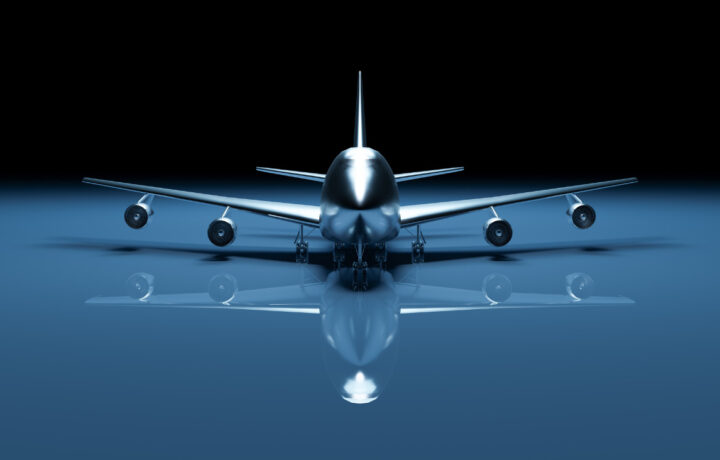As states go, Georgia and Oklahoma don’t immediately have all that much in common – except for hot and humid summers. Georgia is a truly “southern” state that was one of the original British colonies; while Oklahoma is a “plains” state that became only the 46th to enter the union in 1907. Yet, both states are home to multiple military bases, and each relies on an economic base that is built around agriculture, mining, and manufacturing – the latter notably in the aerospace sector.
The Peach State in the Spotlight
Georgia has been consistently ranked in the top four states for Aerospace Manufacturing attractiveness by PWC since 2015, while aerospace products remain the Peach State’s leading export, summing $9.19 billion in 2021. Aerospace is also the state’s second-largest manufacturing industry, generating a $57.5 billion economic impact.
Currently, more than 200,000 Georgians work in aerospace-related occupations, from aerospace engineers to machinists to CNC tool operators.
“Following the COVID-19 pandemic, the industry has rebounded and is projecting growth into the future with Georgia experiencing 2.3 times the growth of U.S. exports in aerospace,” explained Alyssa Sheehan, director of aerospace at the Georgia Center of Innovation (COI), via an email to ClearanceJobs.
“This comes with a wide range of employment opportunities from defense to civilian aviation and manufacturing,” added Sheehan. “Top employers like Gulfstream, Lockheed, and Delta call Georgia home in addition to four U.S. Air Force bases that employ military and civilian populations.”
Recent announcements also highlight Georgia’s role in shaping the future of defense and air mobility with companies like Anduril and Archer opening locations and expanding their workforce.
“Whether it is research and development, manufacturing, or logistics, Georgia offers multiple career pathways for those seeking employment across the entire aerospace lifecycle,” Sheehan continued.
There are now 285 private facilities dedicated to aerospace parts and products manufacturing, while 25,000 civilian workers are employed at those four Air Force bases.
Easy Access to Georgia
Georgia could be inviting for small business looking to make a move, as the state is home to the world’s most traveled airport – Hartsfield-Jackson Atlanta International Airport – along with eight regional airports, and accessibility via the Port of Savannah, one of the fastest-growing container ports in North America. It is already the third-largest seaport in the United States in terms of cargo volume.
“With the busiest airport in the world, business or personal travel is available around the clock,” noted Sheehan.
There are many reasons that Georgia could also be inviting to those seeking a career in aerospace.
“Georgia is a large, diverse, and growing state that offers an attractive cost of living and access to top-tier educational institutions,” said Sheehan. “Staying local for weekends can mean spending time exploring the Blue Ridge Mountains or enjoying the coastal beach towns in places like Savannah.”
It is home to several notable universities as well.
“If you want to begin or continue your education in aerospace engineering, systems engineering, or MBAs, Georgia offers a selection of nationally ranked programs located within the University System of Georgia, including Georgia Institute of Technology, Georgia State University, Middle Georgia State University, and the University of Georgia,” noted Sheehan. “Additionally, there are many opportunities for veterans. Programs include the Vectr Center, which supports military personnel in identifying and transitioning to civilian jobs in a variety of industries including aerospace.”
The Sooner State Ready for an Aerospace Boom
Oklahoma is now home to 18 Fortune 500 companies involved in aerospace and two of the world’s largest MRO (maintenance, repair, and operations) facilities. Aerospace is now the Sooner State’s second-largest industry, with more than 500 companies, and employing more than 120,000 workers.
The Oklahoma Aerospace Commission (OAC) distributes $335,000 on an annual basis to fund programs statewide aimed at exposing more Oklahoma youth to STEM. Since FY2001, the OAC has provided $4.15 million in aerospace and education funding to organizations and programs throughout the state.
You Can Fly Program
Programs to establish the growing pipeline of aerospace workers include the “You Can Fly,” a first-of-its-kind program that offers an aviation STEM curriculum for high schools across the United States. Students have the option of four-year aviation studies that are aligned to Common Core State Standards and Next Generation Science Standards.
The program helps ensure that Oklahoma’s students will be ready for the challenges facing the country in the coming decades
“As our fastest-growing industry, it is critical that we continue to grow our talent pipeline in aviation and aerospace,” said Brent Kisling, executive director of the Oklahoma Dept. of Commerce.
“This program allows us to expose a record number of students to aviation and aerospace from an early age,” Kisling told ClearanceJobs via an email. “And as a practical curriculum, it really engages students and teaches them the practical skills necessary to pursue a future in the field. Currently, there are 58 school districts utilizing the program across our state, but we anticipate that will grow significantly in the next couple of years.”
Attracting Talent to the Plains
Centrally located in the United States, Oklahoma is home to international airports in Oklahoma City and Tulsa, along with 135 public-use airports located across the state. Equal distance between New York, Los Angeles, Mexico, and Canada, there are several major highways that connect the state to within a day’s drive to nearly all U.S. markets, while Oklahoma’s 20 rail operators provide Class I and II service throughout the state.
“The concentration of companies, military operations, and research institutions means that Oklahoma will continue to be at the forefront of the (aerospace) industry for years to come and that means vast career opportunities in the state,” said Kisling. “Wages in the field are competitive while the cost of living is significantly less than many other ‘aerospace states.’ That means people can find a great quality of life and truly enjoy the fruits of their labor.”




